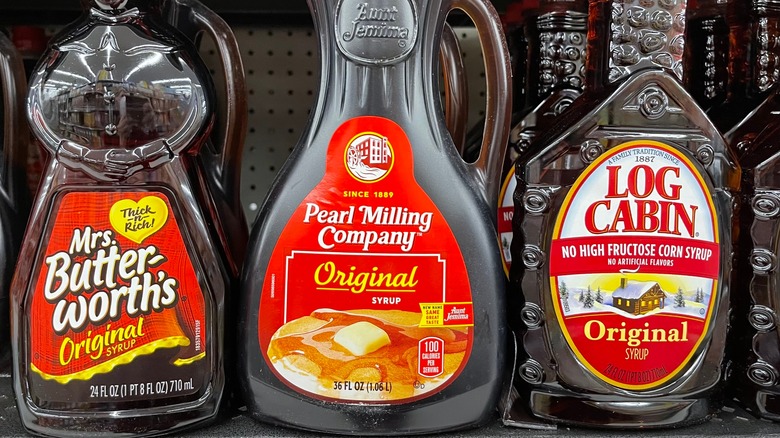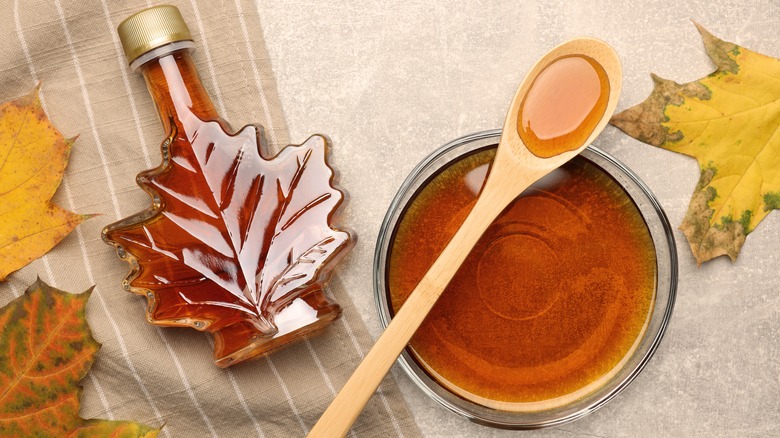The Unexpected Ingredient Missing In Your Store-Bought Pancake Syrup
The sap of the sugar maple tree is a prized and somewhat scarce ingredient that puts smiles on faces around the breakfast table. Although it's commonly enjoyed atop a fluffy stack of pancakes or crispy waffles, the complex balance of aromas in maple syrup can elevate nearly anything, adding a touch of sweetness to tangy dressings and introducing depth of flavor to a marinade. Many folks blindly assume that store-bought pancake syrup is the same thing, but they are doing themselves a disservice by putting their faith in a phony.
Maple syrup is produced primarily in Quebec, Canada, and it's a one-of-a-kind treasure. Yet many imposters want you to think they are the real thing. However, a quick look at the list of ingredients on a syrup bottle will clue you into how legitimate the contents actually are. With true maple syrup, only one ingredient should be on the label: maple sap. If not, you are probably sweetening your dish with a mix based on high-fructose corn syrup.
The store-bought pretenders are usually labeled as pancake or original syrup, but this doesn't stop some folks from thinking they are purchasing a pure product. Authentic maple syrup contains no artificial additives or preservatives, though because of this, it has a shorter shelf life than its doppelgangers. Even if you don't check the list of ingredients on the container, there are some other dead giveaways that allow you to quickly identify the genuine artifact.
Real maple syrup has other tells you can spot
The texture of pancake syrup is thick and, well, syrupy. Bona fide sap from a maple tree is much less viscous, coming out of the bottle in more liquid form. The color difference is another identifier. The fake stuff is generally dark brown, whereas Canada's claim to fame tends to have a more golden-amber hue.
Store-bought pancake syrup is also reasonably affordable, averaging around $4 per bottle (though of course this varies from region to region and brand to brand). Producing real maple syrup is labor intensive, and because it involves so much effort to get it to your kitchen counter, it is more expensive than pancake syrup. It is not uncommon for the genuine stuff to cost double the price of its knock-off competition. It also typically comes in a more presentable container like a glass jar.
The most obvious way to tell the difference between syrups is taste. Authentic maple syrup contains several underlying flavors like caramel and vanilla — not unlike the complexity of a good Kentucky bourbon. Meanwhile, pancake syrup usually contains just a single sweet note. If all you are looking for is a sugary taste, then the dupes will do the trick. However, if you want more complex flavors incorporated into your dish, check the ingredients listed on the label to make sure your store-bought syrup is the real maple deal.

